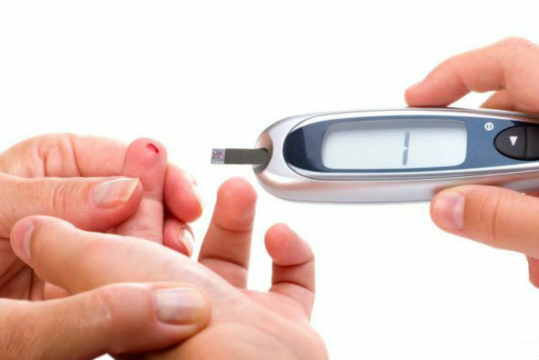Hyperglycemic coma is a rather serious and dangerous state of human health that occurs in patients with diabetes mellitus. Its cause is an increase in insulin deficiency and a significant reduction in the excretion of glucose from the blood. The patient is severely disturbed by the process of metabolism, resulting in the formation of many ketone bodies, as well as acid-base balance is knocked down, intoxication of the central nervous system occurs.
What are the causes of the disease?
Hyperglycemic coma develops for several reasons. These include:
- in time not detected diabetes mellitus;
- wrong plan for his therapy;
- inadequate or insufficient dosage of insulin;
- not compliance with dietary nutrition;
- use of certain medications.
In addition, we can also say about some external factors, the influence of which can lead to its development. These are various kinds of infectious diseases, surgical intervention, stressful situations, traumas of a mental nature that were transferred by a person suffering from diabetes.
The specialists explain this by the fact that when there are inflammatory processes in the body of the patient or there is a load of the psyche, the consumption of insulin increases several times, so the dose introduced by a person may not be enough to fill it.
It should be noted that coma can develop even if the patient changes the form of insulin. Therefore, the drug must be changed only with the approval of the attending physician, while strictly monitoring their own well-being. It is also strictly forbidden to use insulin, which has been frozen or expired.
Another factor contributing to its development is pregnancy and labor. If the future mother suffers from a latent form of diabetes mellitus and does not even guess about it, then the state of coma can lead to the fact that both the woman and the fetus will die.

In the case when the disease is detected before the conception of the child, you need to carefully monitor your health. With any negative manifestations, the gynecologist should be told immediately and the sugar content in the blood should always be kept under control.
People with type 2 diabetes mellitus may fall into a coma due to impaired pancreatic activity. Such malfunctions can cause acute insulin deficiency.
How to recognize pathology?
A hyperglycemic coma may occur gradually over several hours and even days. Clinical manifestations only increase with time. First of all, the patient complains of such symptoms of hyperglycemic coma:
- strongly wants to drink, the mouth feels dry;
- is troubled by polyuria;
- feels nauseous, vomiting is possible;
- itchs the skin;
- feels weakness in the body;
- headache;
- the body is quickly tired.
If at least one of these symptoms occurs, you should immediately check the blood sugar. The most dangerous thing is that the patient may not understand that he develops hyperglycemia, and write off the bad state of health for the usual food poisoning. As a result, it is impossible to prevent the fall into the full coma in time.

If the patient has not administered an additional dosage of insulin, the manifestations change slightly, as the pre-smoking state develops.
- Polyuria replaces anuria.
- The patient more and more often tears, and the patient does not feel relief from it.
- The odor, similar to acetone, becomes noticeable during respiratory activity.
- In the abdomen, painful sensations of a different nature may appear.
- There are also problems with the stool, which can not be eliminated without the help of a doctor.
At the last stage of the pathology, there are signs of hyperglycemic coma, like confusion, high body temperature. In addition, the tone of the eyeballs decreases, tachycardia occurs, blood pressure drops. With a hyperglycemic coma the skin becomes dry, cold and flaky.
It is also characteristic of hyperglycemic coma that people breathe differently. There is noisy breathing of Kussmaul, which is a rhythmic rare breathing cycle, when a person inhales with a noise and exhales sharply. At the same time, the smell of acetone, the dryness of the tongue, its overlay with a touch of brown color are noticeable. With such manifestations, a complete coma sets in, when the patient loses consciousness and no longer reacts to environmental factors.
Hyperglycemic coma always develops differently with respect to time. In most cases, the symptoms are disturbing for 2-3 days. If during this time, the necessary medical care is not provided in the hospital, then the death occurs after the day after the commencement of coma.
How does hyperglycemic coma develop in children?
Hyperglycemic coma in children is an equally dangerous ailment that can lead to death. Often, specialists face hyperglycemic ketoacidotic coma, which requires immediate hospitalization of a sick child.
There is a pathology in children for the same reasons as in adults. However, psychic and hormonal imbalances, which are observed in childhood and adolescence, are also singled out. Such a factor can also cause a hyperglycemic coma.
In any case, the development of pathology occurs when parents are inattentive to the health of the child, do not detect the presence of diabetes in time because of which a hyperglycemic coma occurs.
Clinical manifestations of a child's illness are the same as those of an adult. At the same time, parents should understand well that children can not objectively assess their health on their own, so it is important to closely monitor them.
How is the disease treated?
When the first signs of hyperglycemic coma occur, it is urgent to do an analysis for sugar. In addition, a urinalysis is performed to find out if ketones are present in the body. If the patient has not yet fallen into a coma, but says that he is concerned about drowsiness, weakness, frequent desire to drink, then it is necessary to ask whether he is taking insulin. If a person responds positively, then you should take emergency care, namely, to introduce a remedy, give a drink of water and call the hospital.

Emergency first aid for hyperglycemic coma, which must be performed before the doctors arrive, should be carried out sequentially. While waiting for doctors to arrive, the following should be done:
- Place the patient in a horizontal position.
- If there is a belt, belt, tie, then you need to loosen them, and if you are wearing tight clothes, then unfasten it.
- Closely monitor the position of the language, do not let it sink.
- Enter the insulin injection.
- Periodically measure the pressure, if it falls, then give a medicine that boosts it.
- Give the patient more water to drink.
Having arrived, doctors take the patient to the clinic. There, the specialists conduct the following treatment for hyperglycemic coma:
- First of all, in the clinic, a jet is injected, and then insulin is injected into the drip.
- Rinse the stomach, clean the intestines with an enema with 4% sodium bicarbonate solution.
- Place the patient under a dropper containing saline solution Ringer's solution.
- Every 5 hours, 5% glucose is injected.
- In the treatment of hyperglycaemic coma, another 4% sodium bicarbonate solution is used.
- In this case, doctors should measure pressure every hour and determine the degree of coma hyperglycemic.
What are the possible consequences?
If a coma has been detected in a timely manner and proper treatment has been performed in patients of young and middle age, then pathology does not cause any dangerous consequences. In case of an inadequately diagnosed illness and a patient's long stay in a coma, if the patient is still an elderly person, the following complications may develop:
- Pulmonary embolism, cerebral edema.
- Aspiration pneumonia.
- Violations of speech and motor activity.
- Stroke or myocardial infarction.
Children who have suffered a coma may have mental disorders. In women waiting for a child, the fetus may die inside the womb.
What is necessary for prevention?
Patients with diabetes are required to always monitor blood sugar levels, adhere to the rules of dietary nutrition and recommendations for the use of medicines against diabetes. Also, one should not allow stressful situations and heavily burden the body physically.
People who do not have diabetes should also be checked periodically for sugar. This will help to identify the pathology in time and take all the necessary measures.
Children with type 1 diabetes must be treated with special care. After all, they are unstable hormonal background, psyche, often there are stressful situations. In addition, children may not fully comply with the diet, this must be strictly monitored.
What is a hypoglycemic coma?
The development of this type of coma is very rapid. In this regard, it poses a huge danger, especially for children. This pathology develops as a result of lowering the sugar content in the blood.
The following factors may be the cause of coma:
- Inability to prevent coma when the initial symptoms manifest.
- Alcohol abuse.
- Ignorance of the amount of insulin dosage required.
- Taking certain medications that make the body produce its own insulin.
In the development of hypoglycemic coma, the following symptoms of hypoglycemic coma are observed in the patient:
- Skin pale.
- Increases sweating.
- There is a tremor in the upper and lower extremities.
- The heart beats violently.
- The opportunity to concentrate attention is lost.
- Feels strong desire to eat.
- Nausea worries.
If these manifestations are noted, several glucose tablets should be used as an emergency. If the symptoms are found in the child, you can give a sweet tea, eat a candy or a piece of sugar.
There are secondary signs of hypoglycemic coma:
- Head is very sore, dizziness worries.
- There is weakness in the whole body.
- Torturing fear, which can seem like a panic.
- Speech is confused, vision is impaired.
- Feet and hands are shaking.
In case of untimely or improper care, children with such symptoms may experience seizures of the chewing muscles and abruptly lose consciousness. Especially dangerous is the coma, which arose in a person who drank a large amount of alcohol. After all, all the symptoms indicate a banal alcoholic intoxication. At this time, alcohol disrupts the activity of the liver, as a result of which the sugar content in the blood decreases.
Patients with diabetes should administer the insulin they use before they start eating. If there is no possibility to eat, then it is necessary to use a piece of sugar or a candy that avoid hypoglycemia.
In the course of patient therapy, it is important not to confuse hypoglycemia with hyperglycemia. This is necessary in order to not carry out the introduction of glucose in place of insulin or vice versa. When hypoglycemia in the hospital is injected into the vein glucose, and then put a dropper with it. Also prescribe the use of diuretics to prevent edema of the brain.
Hyperglycemia and hypoglycemia are serious complications of patients with diabetes mellitus. If you discover the first signs, you should immediately call your doctor, because untimely treatment of hyperglycemic coma can lead to death.






